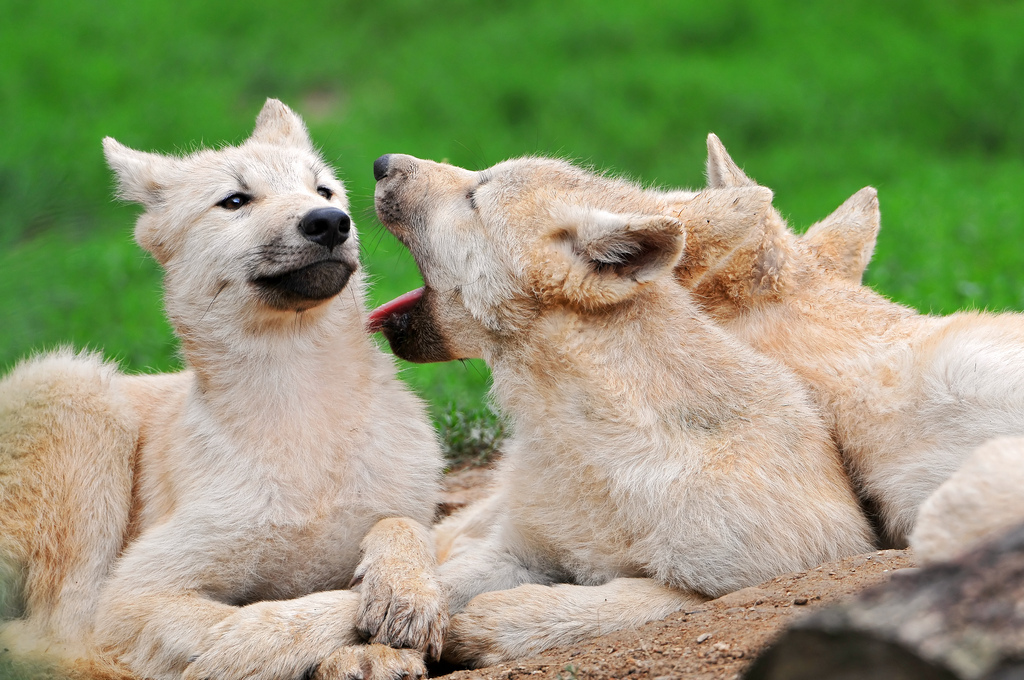

There’s an Aesop’s fable that goes something like this: a hungry pupper holding a bone sees his reflection in a pool. He thinks he can grab this other dog’s bone while keeping a grip on his own, but of course when he opens his jaws to snatch it away, his bone splashes into the pool and he’s left with nothing.
That’s not far from how wolves approach risk, according to a new study out of the Wolf Science Centre in Ernstbrunn, Austria. They observed seven wolves and seven dogs, all raised in the same conditions, free to form packs in near-natural conditions. They were trained to choose between two upside-down bowls using paw or nose gestures, and received whatever was hidden under the bowl they chose. Before the test, the trainers taught them that one bowl consistently hid a sad food pellet. The other bowl concealed either a tastier morsel of meat, or nothing.
Wolves chose the risky option 80 percent of the time, while dogs only took a risk in 58 percent of trials.
Researchers roughly estimate that humans domesticated dogs between 18,000 to 30,000 years ago, taking away the urgency of getting a big meal, or nothing at all. Dogs know they will be fed or can scavenge for food from humans, while wolves are innately hunters, accustomed to taking risks in a failed or dangerous hunt. If you suspect thousands of years of evolution took some of the spice for life our of your Shih Tzu, you’re correct.
